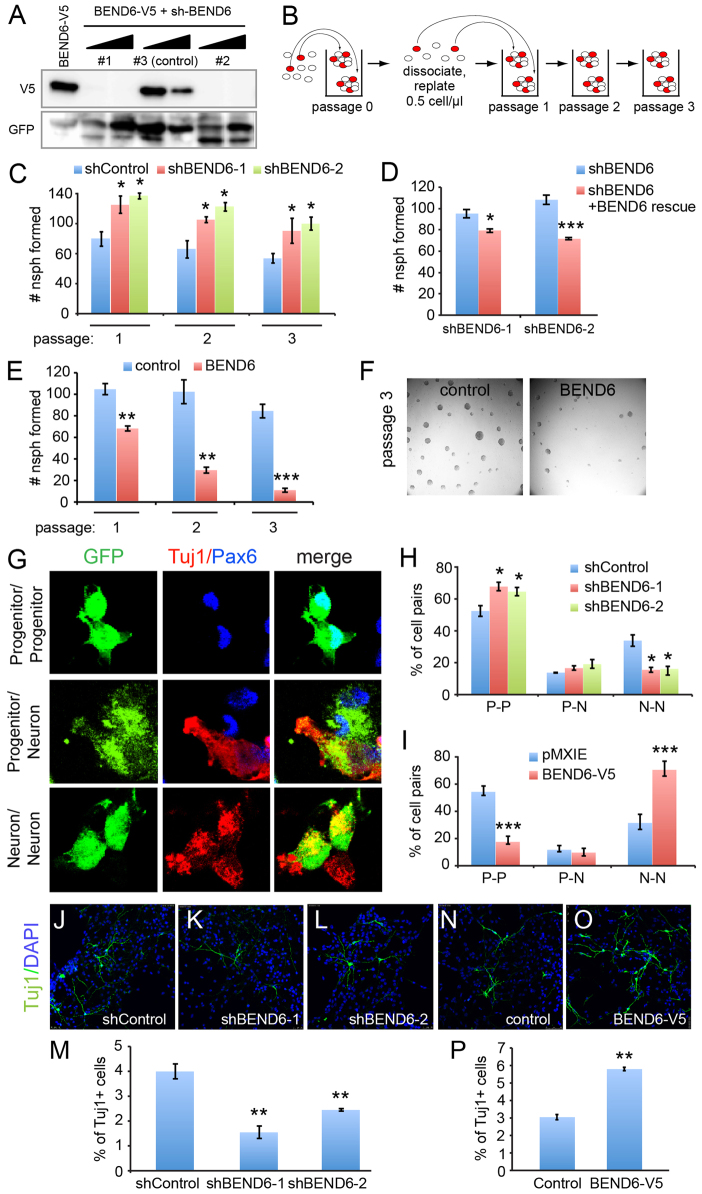Fig. 4.
Reciprocal effects of BEND6 gain and loss of function on neural stem cell self-renewal and neural differentiation in neurospheres. (A) Validation of mBEND6 shRNAs by co-transfection of HEK293T cells at 1:1 and 3:1 ratio with mBEND6-V5. sh-BEND6 constructs #1 and #2 were effective, whereas #3 was relatively inefficient and was subsequently used as a control. (B) Schematic of long-term neurosphere self-renewal assay. Red circles represent stem cells, which can self-renew and generate new neurospheres following dissociation. (C) Assays of neurospheres expressing control or active shRNAs against mouse Bend6 (n=4 animals/condition) shows that mBEND6 depletion increases self-renewal. (D) Effects of shBEND6-1 and shBEND6-2 were rescued by an shRNA-resistant BEND6 construct. (E). Enforced BEND6 expression induces progressive loss of neurosphere self-renewal (n=3 animals/condition). (F) Representative images of pMXIE- and mBEND6-V5-expressing neurospheres from passage 3. (G) Pair-cell assays illustrating the different outcomes of transfected (GFP+, green) progenitor cells undergoing symmetric or asymmetric division, as labeled by progenitor (P) marker PAX6 (blue) or neuronal (N) marker TUJ1 (red). (H) Quantification of P-P, P-N and N-N cell pairs from progenitor cells expressing shRNA control (196 cells from three animals) or mBEND6 shRNAs (201 cells from three animals). (I) Quantification of daughter cell pairs from pMXIE (235 cells from three animals) or mBEND6-V5 (213 cells from three animals) expressing progenitor cells. (J-L) Neurospheres expressing control or mBEND6 shRNAs were differentiated and stained for TUJ1 (green) and DAPI (blue). (M) Quantification of TUJ1+ cells shows that depletion of mBEND6 reduces neurogenesis (n=3 animals). (N,O) Differentiation of cells from neurospheres expressing pMXIE and mBEND6-V5. (P) Quantification of TUJ1+ cells shows that overexpression of mBEND6 increases neurogenesis (n=3 animals). All data are shown as mean±s.e.m. *P<0.05; **P<0.005; ***P<0.0005.

